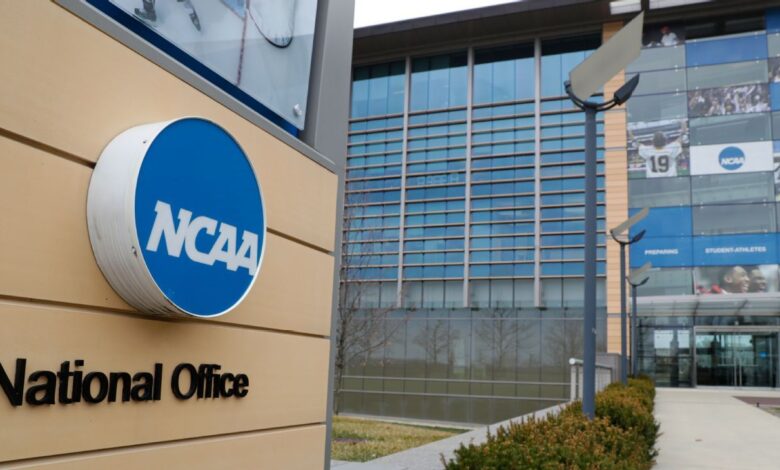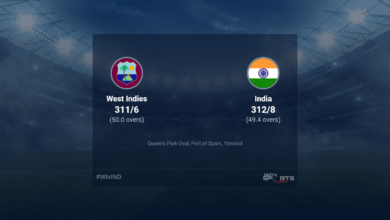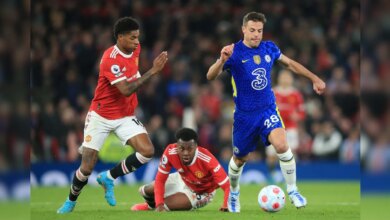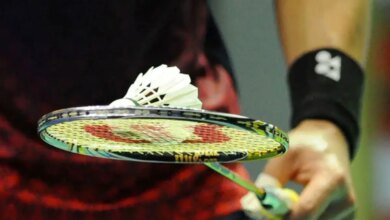Court filings reveal terms of NCAA antitrust settlement

The NCAA, five power conferences and lawyers representing a group of Division I athletes filed detailed terms of an antitrust lawsuit Friday that has the potential to reshape the business of college sports.
The parties agreed in late May to settle three lawsuits (House v. NCAA, Hubbard v. NCAA and Carter v. NCAA) over the various ways schools compensate their athletes. Friday’s filing is the first of several major steps toward formalizing the agreement. The new details spell out how former athletes will share in the $2.78 billion in damages the NCAA has agreed to pay, establish a new system for revenue sharing and spell out new roster limits for a long list of college sports, among other items.
“This is another important step in the ongoing effort to provide greater benefits to student athletes while creating a stable and sustainable model for the future of college sports,” the NCAA and its governing conferences said in a statement Friday night. “While there is still work to be done in the settlement approval process, this is an important step toward establishing clarity for the future of all Division I sports while maintaining a long-term educational model for college sports that ensures student athletes have the opportunity to earn degrees and the tools necessary to succeed in life after sports.”
Schools will be allowed to pay their athletes directly for the first time through name, image and likeness (NIL) deals under the terms of the deal. Each school can provide up to 22% of the average conference revenue generated from media rights, ticket sales and sponsorships — a sum expected to be between $20 million and $22 million per school when the deal takes effect at the start of the 2025-26 school year.
Athletes can still make money from NIL deals with third parties, but the NCAA says the agreement will allow it to install a “stronger and more effective monitoring and enforcement program” to ensure those third-party deals are “legitimate NIL activity.” Many athletes — particularly in football and basketball — currently receive money from booster groups, which have evolved to serve as outsourced payrolls to attract top players rather than paying for an athlete’s actual value as an endorser. The NCAA hopes its new system will cut down on those types of deals.
The NCAA plans to create a database of NIL deals to try to objectively assess whether agreements between an athlete and a third party qualify as legitimate endorsement deals. Several coaches and athletic directors have told ESPN in recent weeks that they expect some form of NIL payments from teams to continue.
The agreement allows the court to appoint a “special judge” to rule on any disputes related to the new rules regarding player compensation. This marks a notable departure from the NCAA’s history of using its own enforcement arm to determine whether an athlete or school has violated its compensation rules. The agreement also establishes an arbitration process for players and schools to challenge any penalties under the new rules.
The two sides have yet to determine who will be the new enforcement agency or who will oversee the arbitration process to resolve any future disputes.
The $20 million to $22 million figure serves as a salary cap that will increase over time as league revenue increases. Experts cited in court documents said they expected the cap to rise to nearly $33 million per school by the end of the 10-year term of the agreement. The NCAA and plaintiffs’ attorneys said those payments, when combined with tuition and other benefits athletes already receive, would create a system where many schools share nearly half of the revenue they generate with athletes. That figure is comparable to revenue-sharing agreements in professional sports.
Steve Berman, a consultant and lead advisor to the athletes, said their goal in negotiations is to achieve a revenue split closer to 50/50.
“That’s right,” said Berman.
The 50/50 split considers all athletes at a school as a group, not by sport. For example, it’s unlikely that football players — who generate the bulk of revenue for most schools — will receive 50% of the money the football team generates. Some of those benefits must be split evenly due to the provisions of Act IX. The agreement doesn’t provide specific guidance on how to apply Act IX to these new benefits, leaving some potentially difficult decisions up to individual schools.
Law firms run by Berman and co-counsel Jeffrey Kessler will be responsible for auditing financial statements from NCAA schools throughout the 10-year settlement process to ensure schools are accurately reporting revenue.
As for past damages, the plaintiffs’ attorneys have proposed a proposed formula to determine how the money will be divided among eligible athletes. Any Division I athlete who played a sport from 2016 through the present is eligible for past damages. The 2016 cutoff is due to a statute of limitations for the original House v. NCAA lawsuit, which was filed in 2020. The formula takes into account a number of factors, including where the athlete attended school and how many shots or minutes they played.
Berman said men’s football and basketball players from Power Conference colleges would be eligible for an average of $135,000. Women’s basketball players from Power Conference colleges could receive an average of $35,000. Potential payouts for athletes from other sports would depend on how many participants claim.
For some, a portion of the payout will also be based on the athletes’ potential earning power if they were able to sign a NIL contract while still in school. Berman said the highest estimated individual payout for an athlete would be $1.8 million.
Under the deal, the NCAA has agreed to remove any limits on the number of scholarships a school can offer to athletes. Previously, NCAA rules set a limit on the number of scholarships available to each sport. If the deal is approved, there will instead be a limit on the total number of players each team can have on its roster, and each school will decide how many players it wants to offer.
Judge Claudia Wilken is expected to review the proposed settlement terms in the coming weeks and decide whether to accept them on a preliminary basis in early September or sooner. The settlement agreement calls for athletes to be notified of the details of the settlement by October 1, and the deadline for athletes to object to the terms of the agreement would be 105 days later, on January 14, 2025.
Berman said the plaintiffs plan to launch a website that will allow all athletes to calculate how much money they could receive from the damages fund.
After the athletes have had a chance to review the terms, Judge Wilken will make a final decision on whether to accept the deal. That decision is not expected until late 2024 or early 2025.




